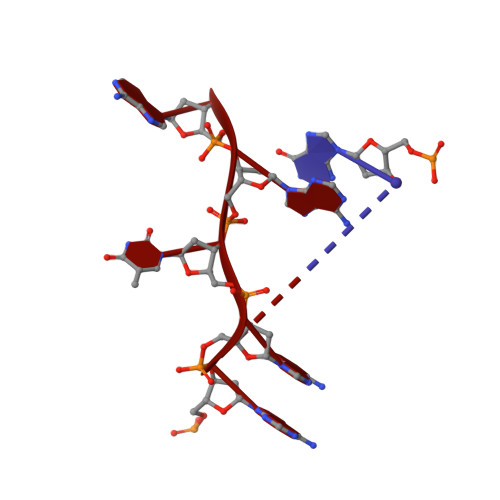Bipartite genome and structural organization of the parvovirus Acheta domesticus segmented densovirus.
Penzes, J.J., Pham, H.T., Chipman, P., Smith, E.W., McKenna, R., Tijssen, P.(2023) Nat Commun 14: 3515-3515
- PubMed: 37316488
- DOI: https://doi.org/10.1038/s41467-023-38875-x
- Primary Citation of Related Structures:
8ER8, 8ERK, 8EU6, 8EU7 - PubMed Abstract:
Parvoviruses (family Parvoviridae) are currently defined by a linear monopartite ssDNA genome, T = 1 icosahedral capsids, and distinct structural (VP) and non-structural (NS) protein expression cassettes within their genome. We report the discovery of a parvovirus with a bipartite genome, Acheta domesticus segmented densovirus (AdSDV), isolated from house crickets (Acheta domesticus), in which it is pathogenic. We found that the AdSDV harbors its NS and VP cassettes on two separate genome segments. Its vp segment acquired a phospholipase A2-encoding gene, vpORF3, via inter-subfamily recombination, coding for a non-structural protein. We showed that the AdSDV evolved a highly complex transcription profile in response to its multipartite replication strategy compared to its monopartite ancestors. Our structural and molecular examinations revealed that the AdSDV packages one genome segment per particle. The cryo-EM structures of two empty- and one full-capsid population (3.3, 3.1 and 2.3 Å resolution) reveal a genome packaging mechanism, which involves an elongated C-terminal tail of the VP, "pinning" the ssDNA genome to the capsid interior at the twofold symmetry axis. This mechanism fundamentally differs from the capsid-DNA interactions previously seen in parvoviruses. This study provides new insights on the mechanism behind ssDNA genome segmentation and on the plasticity of parvovirus biology.
- Centre Armand-Frappier Santé Biotechnologie, Institut national de la recherche scientifique, Laval, QC, H7V 1B7, Canada. judycash08@gmail.com.
Organizational Affiliation:

















